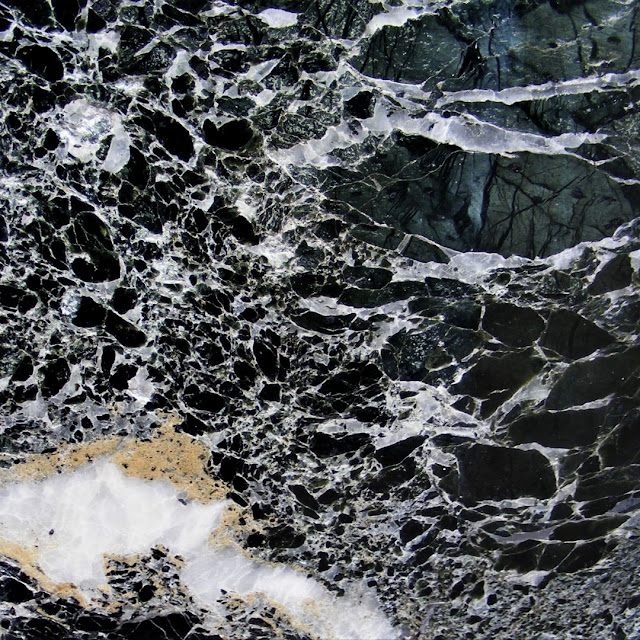 |
| A slab of polished serpentinite adorning a wall for the pleasure of geologists and photographers |
"Why did you choose geology?" asked the tutor of each of us in turn. "Well, I suppose it was 'Once a rock chick, always a rock chick" I replied. I actually had that as my tagline in my course's message board signature at the time, and one of the other students commented that she had seen me and the said tagline on there.
It was true for more than one given value of the word
'rock'. I had listened to a fair bit of it during my teens and early twenties;
Deep Purple's 'Black Night' still puts a smile on my face (Incidentally, I know
that it's a rather heretic view, but I actually prefer Steve Morse to Richie
Blackmore). I can take or leave quite a lot of rock [music] nowadays –
but I get really excited by a good orchestra and spend a fair bit of time at
concert halls. I’ll be posting about
that from time to time.
I had become fascinated by geology and palaeontology in the
very early parts of my degree (and I still am). I'd planned to study biology
and ecology, but my foundation course was multi-disciplinary and I contracted a
severe case of adult-onset geology. I love what every bit of an outcrop,
feature, rock or even slab of polished stone can tell us about its history and
I marvel at the sheer variety of geology. Don't even start me on the beauty of
thin sections! You can see why I loved this serpentinite.
Like all polished stone surfaces, this was a so-and-so to photograph, and I was ridiculously pleased with this photo – taken on a Samsung mobile phone - when I looked at it on a large monitor when I got home. Serpentinite gets its name from the fact that it looks like snakeskin. You can see why! The slab in this photo is cladding a wall in Nottingham city centre. When you look at the surface of a well-polished serpentinite it can give the illusion that you're looking into a 3D structure and you can almost lose yourself in it. That was especially true in this case - just look at the top-right quadrant of this photo. That is pretty much why I chose this photo to relaunch this blog*, where I'll also be blogging about wildflowers, photogrpany, life in general and my (quietly mundane) life.
A blog isn't the place to go into the petrology of serpentinites but, in a nutshell, they are formed by hydrous alteration of rock rich in iron and magnesium - this can happen at, for instance, mid-ocean ridges or some parts of subduction zones. And just look at how minerals have infilled where the water penetrated!
-----------------------------
*If you followed me on the previous iteration of my blog, then welcome back!
Comments
Post a Comment